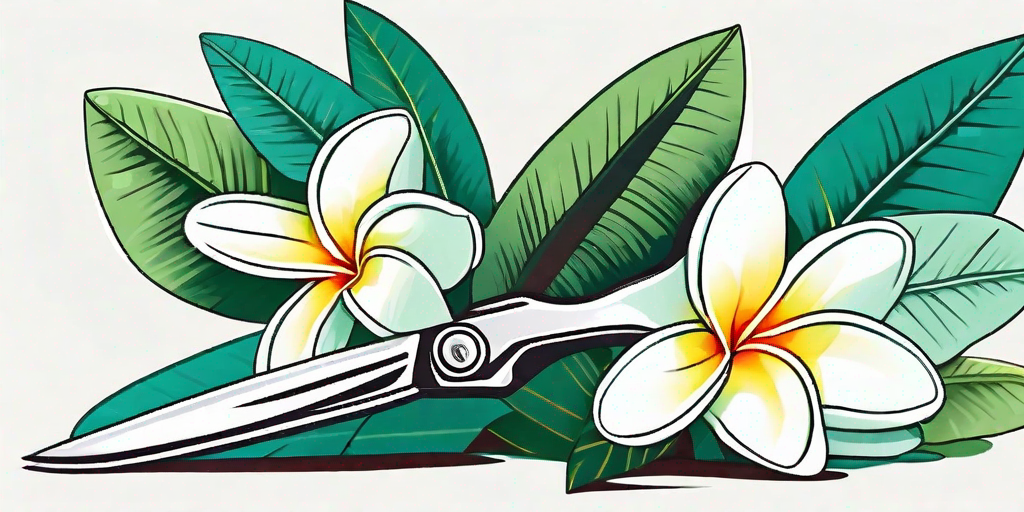
Ah, the Plumeria, the belle of the botanical ball, the diva of the dirt, the queen of the garden! If you've been blessed with the presence of this tropical beauty in your green space, you know that it's not just a plant, it's a lifestyle. But like any diva, Plumeria demands attention, care, and above all, a good trim now and then. So, grab your gardening gloves, your sharpest shears, and let's dive into the world of Plumeria pruning!
The Importance of Trimming Plumeria
Why trim, you ask? Well, just as you wouldn't let your hair grow wild and untamed (unless that's your style, in which case, rock on!), your Plumeria needs a good haircut every now and then. Trimming not only keeps your Plumeria looking neat and tidy, but it also promotes better growth and more abundant blooms. It's like a spa day for your plant!
Furthermore, regular trimming helps to prevent disease and pest infestations. Overgrown branches can create a dense canopy that prevents sunlight and air from reaching the lower parts of the plant, creating a perfect breeding ground for fungi and pests. So, by giving your Plumeria a regular trim, you're not just making it look good, you're also keeping it healthy.
When to Trim Your Plumeria
Timing is everything, especially when it comes to trimming your Plumeria. The best time to trim is in the late winter or early spring, just before the plant starts to produce new growth. This gives your Plumeria plenty of time to heal before it starts to bloom.
However, if you notice any diseased or damaged branches, don't wait for the trimming season. Remove them immediately to prevent the spread of disease. Remember, a healthy Plumeria is a happy Plumeria!
How to Trim Your Plumeria
Step 1: Gather Your Tools
Before you start, make sure you have the right tools for the job. You'll need a sharp pair of pruning shears for smaller branches and a pruning saw for larger ones. Also, don't forget your gardening gloves to protect your hands.
And here's a pro tip: sterilize your tools before you start trimming. This helps to prevent the spread of diseases. You can do this by wiping the blades with a cloth soaked in rubbing alcohol.
Step 2: Identify the Branches to Trim
Not all branches need to be trimmed. Look for branches that are diseased, damaged, or crossing over each other. Also, if your Plumeria is getting too tall or wide for your liking, identify the branches that are contributing to its size.
Remember, the goal is to create a balanced, open canopy that allows sunlight and air to reach all parts of the plant.
Step 3: Make the Cut
Now, it's time to make the cut. Hold your shears at a 45-degree angle and cut just above a node or a set of leaves. This encourages new growth in the right direction.
For larger branches, use your pruning saw. Make a small cut on the underside of the branch first, then cut from the top. This prevents the branch from tearing and causing damage to the trunk.
Step 4: Seal the Wounds
After trimming, it's important to seal the wounds to prevent infection. You can use a commercial tree wound sealer or even a dab of household glue. Just make sure it's waterproof!
And there you have it, folks! You've successfully trimmed your Plumeria. Give yourself a pat on the back and a well-deserved cup of tea. You've earned it!
Common Plumeria Trimming Mistakes to Avoid
Now that you know how to trim your Plumeria, let's talk about some common mistakes to avoid. After all, knowledge is power, and the more you know, the better you'll be at keeping your Plumeria in tip-top shape.
Firstly, avoid over-trimming. While it's important to keep your Plumeria neat and tidy, over-trimming can stress the plant and stunt its growth. Remember, less is more!
Secondly, don't trim during the blooming season. This can disrupt the blooming cycle and result in fewer flowers. Patience is a virtue, my friends!
Lastly, don't forget to sterilize your tools. This simple step can prevent the spread of diseases and keep your Plumeria healthy.
Frequently Asked Questions
1. Can I trim my Plumeria in the summer?
While it's possible to trim your Plumeria in the summer, it's not recommended. Trimming during the blooming season can disrupt the blooming cycle and result in fewer flowers. The best time to trim is in the late winter or early spring, just before the plant starts to produce new growth.
2. How often should I trim my Plumeria?
There's no set rule for how often you should trim your Plumeria. It largely depends on the growth rate and overall health of your plant. However, a good rule of thumb is to give your Plumeria a thorough trim once a year, in the late winter or early spring.
3. Can I use the cuttings to propagate new plants?
Absolutely! Plumeria cuttings can be used to propagate new plants. Just make sure the cuttings are healthy and disease-free. Allow the cut end to dry and form a callus before planting it in a well-draining soil mix.
Conclusion
And there you have it, folks! Everything you need to know about trimming your Plumeria. Remember, a well-trimmed Plumeria is a happy Plumeria. So, don't be afraid to give your plant a good haircut every now and then. It might just thank you with a spectacular display of blooms!
So, what are you waiting for? Grab your shears, put on your gardening gloves, and start trimming. Your Plumeria is counting on you!















